8 Best Native Plants for Oklahoma
BY JANAE SOULES | MAY 15TH, 2023 | LAWN CARE, OKLAHOMAHere in the Sooner State, you must prepare your landscape for any weather Mother Nature throws your way – anywhere from heat and humidity to snow and everything in between. What better way to do that than to grow plants that are adapted to Oklahoma’s weather? Here are 8 best native plants for Oklahoma to help you get started.
Native plants have many benefits. They require less water and fewer pesticides than non-native plants, support the ecosystem, and are generally low-maintenance.
In this article, we’ll talk about the following:
- Purple Poppy Mallow
- Butterfly Milkweed
- Blue False Indigo
- American Black Elderberry
- Purple Coneflower
- Red Maple
- White Snakeroot
- Pawpaw
- How to Choose Native Plants for Your Oklahoma Landscape
- FAQ About Best Native Oklahoma Plants
- Where to Find Native Plants in Oklahoma
11 Best Native Plants for Your Oklahoma Home
1. Purple Poppy Mallow (Callirhoe involucrata)
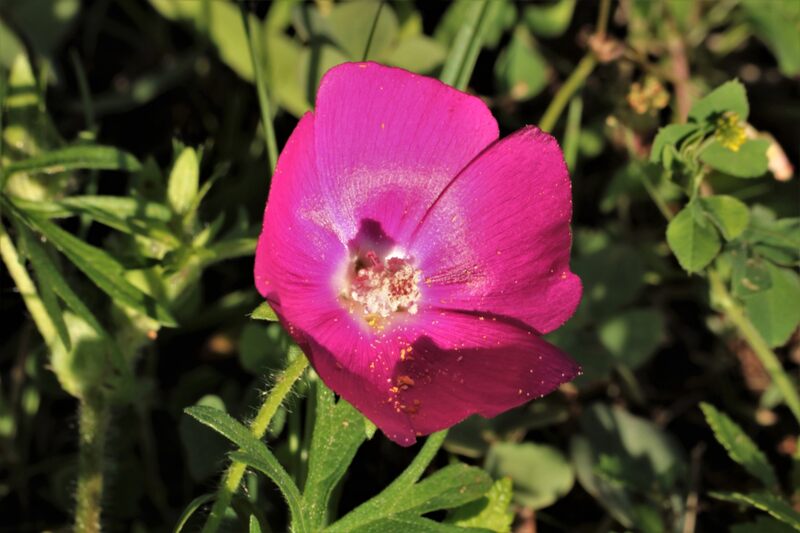
Photo Credit: PublicDomainPictures
Purple poppy mallow has magenta-colored, upward-facing, cup-shaped flowers. The flowers open in the morning. It’s easy to grow, drought-tolerant, and closes in the evening. Purple poppy mallow attracts hummingbirds and butterflies.
Ensure your purple poppy mallow is planted in full sun with well-draining soil, because if the soil is too wet, it could cause the plant to suffer from rust.
Plant type: Flowering ground cover
USDA Hardiness Zone: 3 to 8
Region: Central Oklahoma
Sun: Full sun, partial shade
Soil: Rocky, sandy, loamy, clay
Duration: Perennial
Fragrance: No fragrance
Bloom time: Late spring to early summer
Water needs: Medium
Mature height: Up to 1 foot
Maintenance: Can prune in late summer if desired
2. Butterfly Milkweed (Asclepias tuberosa)
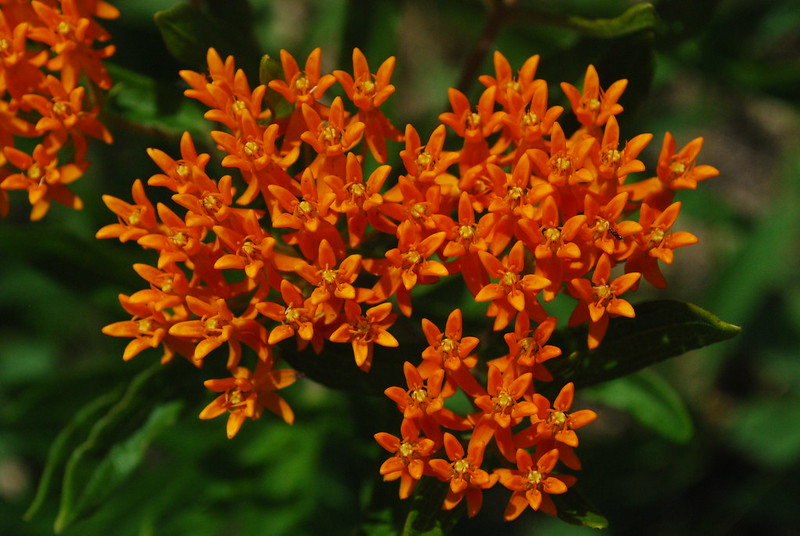
Photo Credit: Joshua Mayer / Flickr / CC BY-SA 2.0
Butterfly milkweed also goes by the common name butterfly weed. It’s recognizable by its orange or yellow-orange flowers and is a crucial plant to help monarch butterflies survive. Butterfly milkweed grows up to two feet tall, and it’s low-maintenance, pest-resistant, and disease-resistant.
Plant your butterfly milkweed in a location that receives full sun. Butterfly milkweed isn’t an ideal choice for a landscape with cats, dogs, or horses, as butterfly milkweed is toxic to humans and animals.
Plant type: Perennial herb
USDA Hardiness Zone: 3 to 9
Region: Central Oklahoma
Sun: Full sun
Soil: Clay, loam, sand
Duration: Perennial
Fragrance: Sweet, vanilla
Bloom time: May to September
Water needs: Low
Mature height: 1 to 2 feet
Potential hazards: Toxic to humans, pets, and other animals.
Maintenance: Low
3. Blue False Indigo (Baptisia australis)
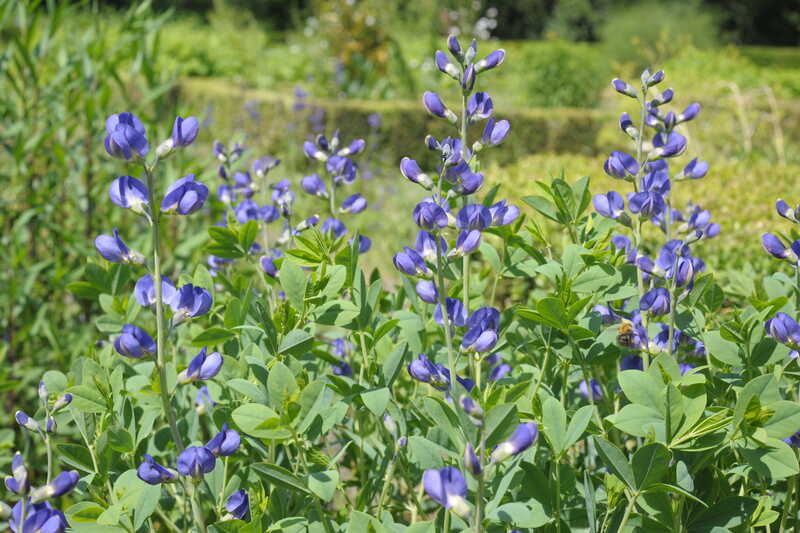
Photo Credit: Joost J. Bakker IJmuiden / Flickr / CC BY 2.0
Blue false indigo is a native wildflower that will require some patience if you’re starting from seed – it could take up to two years for the blooms to appear. Once the blooms appear, you’ll be delighted to see clusters of upright blue flowers. Butterflies and hummingbirds are attracted to Blue false indigo.
Blue false indigo must be planted in full sun to avoid the plant becoming laggy.
Plant type: Upright perennial
USDA Hardiness Zone: 3 to 9
Region: Central Oklahoma
Sun: Full sun
Soil: Loam, sad
Duration: Perennial
Fragrance: None
Bloom time: April to July
Water needs: Low, average
Mature height: 3 to 4 feet
Potential hazards: Poisonous to humans, pets, and other animals.
Maintenance: Low
4. American Black Elderberry (Sambucus canadensis)
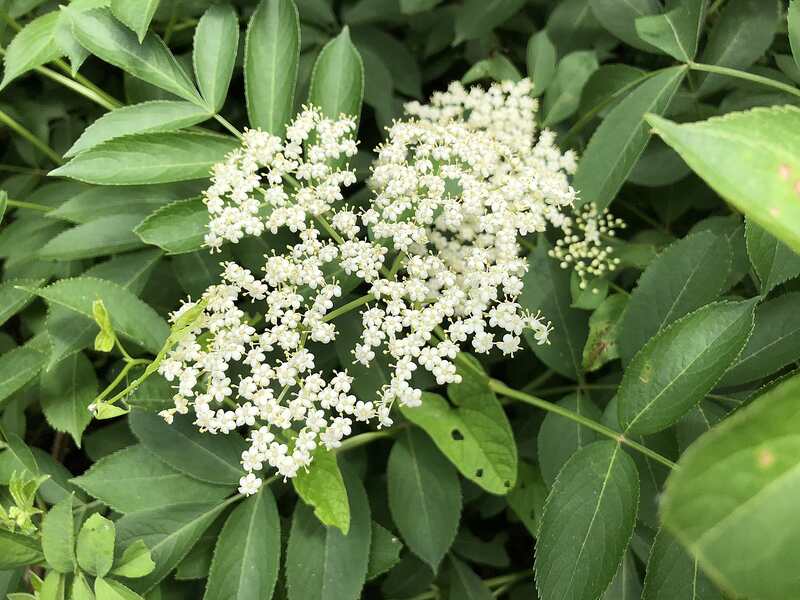
Photo Credit: Famartin / Wikimedia Commons / CC BY-SA 4.0
American black elderberry has white, lemon-scented flowers in the early summer, followed by black elderberry fruits. The fruit attracts birds, but people can make elderberries into jams or jellies. You can plant American black elderberry in full sun or partial shade in well-drained soil – just ensure you wait until the last frost to plant this shrub.
Plant type: Shrub
USDA Hardiness Zone: 4 to 10
Region: Central Oklahoma
Sun: Full sun, part shade
Soil: Tolerates a wide variety of wet to dry soils but prefers rich, moist, slightly acid soil
Duration: Perennial
Fragrance: Leaves smell like lemon
Bloom time: May to July
Water needs: Medium
Mature height: 5 to 8 feet
Potential hazards: Raw elderberries are toxic and should not be consumed
Maintenance: Regular pruning to remove suckers from the base of plant
5. Purple Coneflower (Echinacea purpurea)
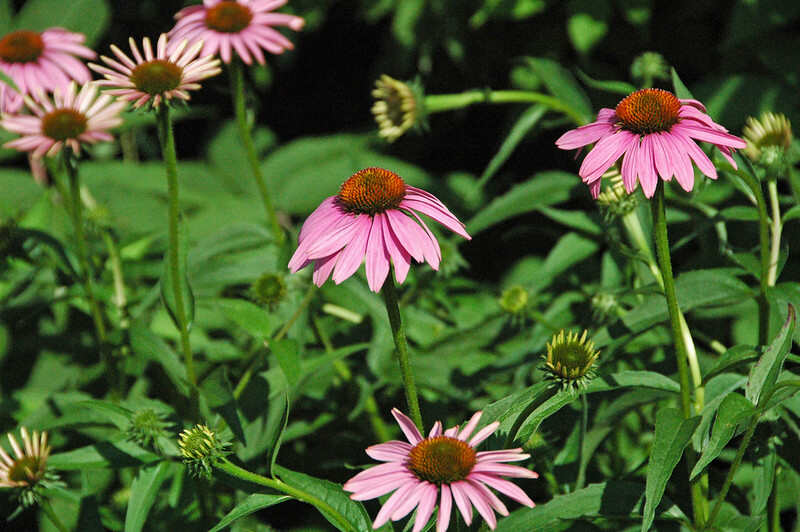
Photo Credit: James St. John / Flickr / CC BY 2.0
Purple coneflower is a beautiful native flower with daisy-like purple coneflowers. Butterflies and hummingbirds are attracted to the nectar in purple coneflowers. These flowers are resistant to drought, heat, humidity, and poor soil, making them a fantastic choice for a native garden.
Feel free to cut your purple coneflowers and put them in a vase – they make an excellent cut flower. Purple coneflower can spread aggressively through self-seeding, so be sure to keep an eye on it.
Plant type: Flower
USDA Hardiness Zone: 3 to 8
Region: Central Oklahoma
Sun: Full sun, partial shade
Soil: Sandy
Duration: Perennial
Fragrance: Light, sweet, honey-like
Bloom time: April to September
Water needs: Medium
Mature height: 2 to 5 feet
Maintenance: Low
6. Red Maple (Acer rubrum)
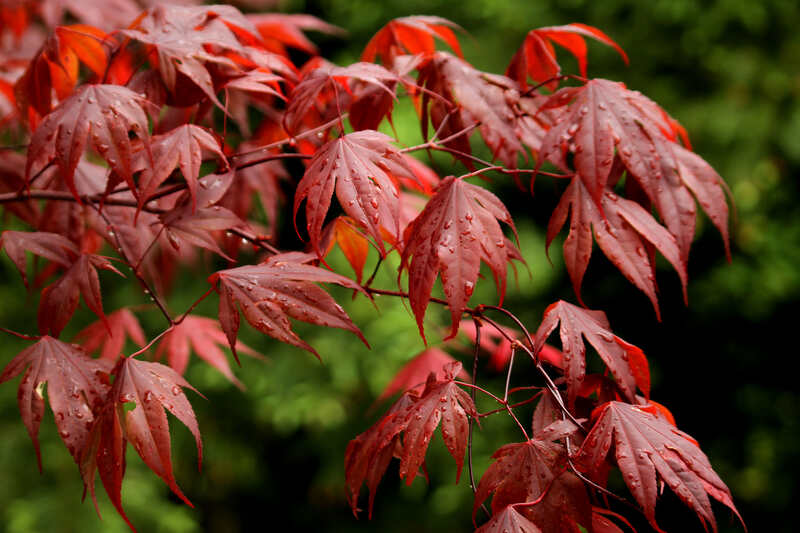
Photo Credit: Heng Wang / Wikimedia Commons / CC BY-SA 3.0
If you’re looking for a small tree, red maple is not the one – this beauty can grow up to 70 feet tall and 50 feet wide. Native to Southeastern Oklahoma, this tree is low-maintenance and fast growing. Red flowers and red fruit will emerge before the leaves. The leaves will be red in the spring, then green or yellow in the fall.
Red maple’s size makes it an excellent shade tree, and these trees are often in backyards, parks, or streets.
Plant type: Tree
USDA Hardiness Zone: 3 to 9
Region: Southeastern Oklahoma
Sun: Full sun, partial shade
Soil: Chalk, clay, loam, sand
Duration: Perennial
Fragrance: Sweet cherry or almond flower scent
Bloom time: March to April
Water needs: Average
Mature height: 40 to 70 feet
Potential hazards: Toxic to horses
Maintenance: Fertilize in the spring before the leaves appear
7. White Snakeroot (Ageratina altissima)
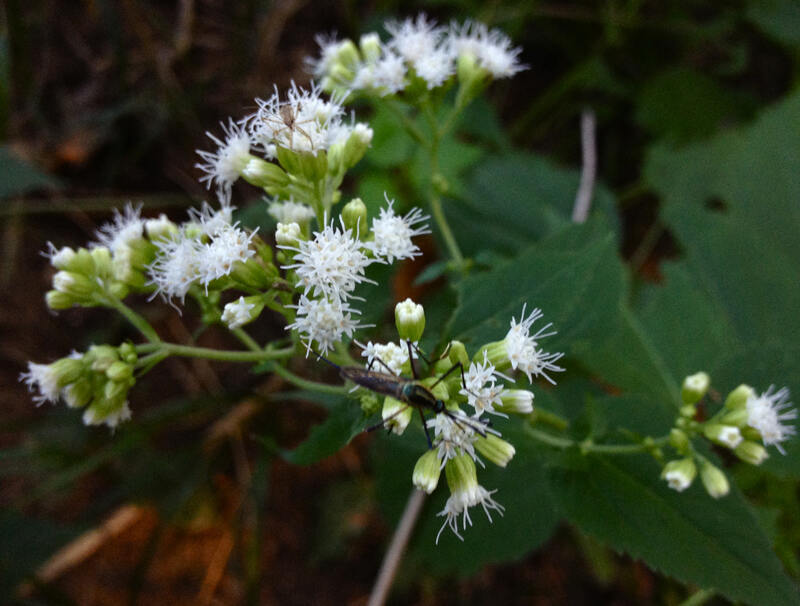
Photo Credit: Fritzflohrreynolds / Wikimedia Commons / CC BY-SA 3.0
Native throughout Eastern Oklahoma, white snakeroot boasts small, white puffy flowers in the summer and fall, attracting bees, butterflies, and moths. With its flowers lasting into the fall, white snakeroot provides a fall-interest landscape. White snakeroot doesn’t generally have problems with diseases or pests.
Plant type: Herb
USDA Hardiness Zone: 3 to 8
Region: Eastern Oklahoma
Sun: Partial shade
Soil: Chalk, clay, loam
Duration: Perennial
Fragrance: Leaves can be foul smelling – like turpentine
Bloom time: July to November
Water needs: Low to average
Mature height: 3 to 5 feet
Potential hazards: Causes trembles in cattle and milk sickness in humans
Maintenance: Low
8. Pawpaw (Asimina triloba)
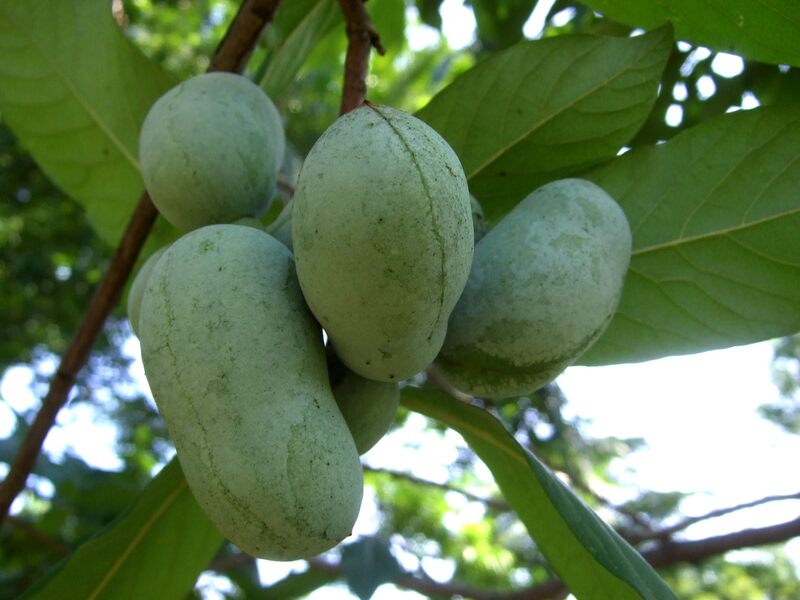
Photo Credit: Wendell Smith / Flickr / CC BY 2.0
Native to the easternmost parts of Oklahoma, pawpaw is recognizable by its large, drooping, oval-shaped bright green leaves, which turn yellow in the fall. Pawpaw’s cup-shaped purple flowers appear before the leaves, and its edible banana-like tasting fruit may emerge afterward.
If you want your pawpaw to resemble more of a tree than a shrub, ensure you’re in a location that receives long, hot summers. Without long, hot summers, pawpaw might stay closer to the size of a shrub, which wouldn’t be fruit-bearing.
Although the fragrance of pawpaw flowers isn’t delightful, beneficial pollinators like beetles and flies are attracted to the smell. Butterflies and songbirds are also attracted to pawpaw trees.
Plant type: Tree
USDA Hardiness Zone: 5 to 9
Region: Eastern Oklahoma
Sun: Full sun, partial shade
Soil: Loam
Duration: Perennial
Fragrance: Fermenting grapes
Bloom time: April to May
Water needs: Average
Mature height: 15 to 30 feet
Potential hazards: Leaves are toxic if ingested. Ingesting the fruit could cause stomach pain for some people. Contact dermatitis could occur when collecting fruit.
Maintenance: Prune congested or damaged shoots
How to Choose Native Plants for Your Oklahoma Landscape
There are many things to consider when choosing native plants for your landscape. First, consider your region. A plant that’s native to Eastern Oklahoma may not be native to Western Oklahoma. Visit your local nursery to learn more about plants native to your area.
You’ll also need to consider your landscape’s conditions. A native plant that prefers full sunlight may struggle if your yard is shaded by trees or buildings. Does your lawn’s soil struggle to drain? Not all plants are tolerant of poor drainage.
FAQ About Native Oklahoma Plants
What plants are native to Tulsa?
Tulsa’s native plants include:
- Bluestar
- Coneflower
- Indian Blanket
- Eastern Redbud
- Purple Passion Vine
- Butterfly Milkweed
- Bitternut Hickory
- Wild Hyacinth
What plants are native to Oklahoma City?
Oklahoma City’s native plants include:
- Purple Poppy Mallow
- New England Aster
- Butterfly Milkweed
- Crossvine
- Blue False Indigo
- American Black Elderberry
- Evening Primrose
- Purple Coneflower
What is the best grass type for my Oklahoma yard?
If you want to complement your native plants with lush, green grass, the best grass types for Oklahoma include:
- Bermudagrass
- Buffalograss
- Zoysiagrass
- St. Augustine
- Kentucky Bluegrass
- Tall Fescue
- Perennial Ryegrass
Take note that, similar to native plants, the best grass type for your yard will vary depending on your region.
Where to Find Native Plants in Oklahoma
The best place to find native plants is to visit your local plant nursery. You can also discover new plants through the Oklahoma Native Plant Society.
While you’re busy planning your new native plant garden, save yourself some time and hand your other yard chores over to the pros. Hire a lawn care pro near you who can handle the yard’s mowing, trimming, and edging. We have trusted pros in Oklahoma City, Tulsa, and many other cities across the state.
Main Image Credit: Ken Gibson / Flickr / CC BY 2.0